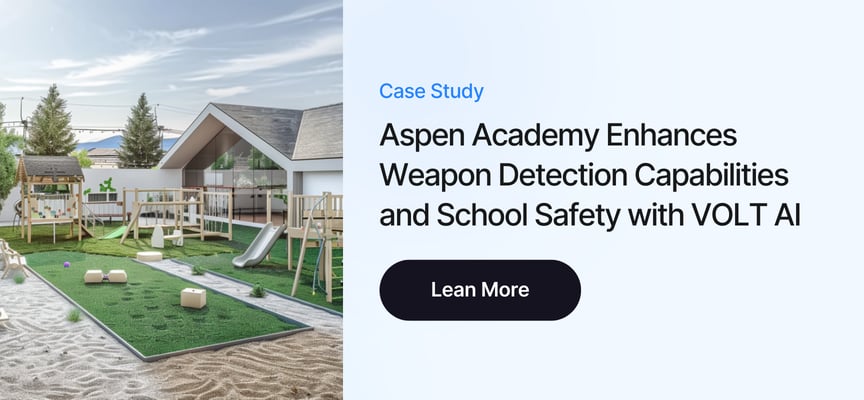Key Takeaways from Live Video Monitoring
- Command Center Evolution: Modern surveillance monitoring has transformed from basic screen displays into comprehensive command centers integrating multiple security systems.
- AI-Enhanced Capabilities: Artificial intelligence dramatically expands monitoring effectiveness by automatically analyzing all video feeds and alerting security personnel to potential concerns.
- Human-Technology Partnership: Effective monitoring requires thoughtful design that optimizes how security personnel interact with technology through ergonomic layouts and intuitive interfaces.
- Integration Hub Approach: The most effective monitoring stations serve as integration hubs that coordinate multiple security systems, including access control, alarms, and communication platforms.
- Spatial Intelligence: Advanced monitoring now incorporates 3D facility mapping that displays security information in spatial context, dramatically improving situational awareness.
In the world of security, video surveillance monitors serve as the critical command center where information becomes actionable intelligence. Far more than just screens displaying camera feeds, today's advanced monitoring stations transform raw video data into comprehensive situational awareness that enables security teams to protect people and property effectively.
For security directors and facility managers, understanding the evolution of surveillance monitoring technology is essential to building systems that deliver genuine protection rather than just the illusion of security.
In this article, we'll explore the capabilities, considerations, and best practices for implementing effective video surveillance monitoring solutions that maximize both security effectiveness and resource efficiency.
Read Now: How video monitoring is transforming with AI Powered Intelligence
Video Monitoring: From Basic Displays to Command Centers
Traditional video monitoring began with simple CCTV setups displaying camera feeds on basic monitors. Security personnel would manually switch between cameras or watch multiple feeds simultaneously, attempting to identify security concerns across numerous screens. This approach created significant limitations:
- Human operators could effectively monitor only 1-2 screens simultaneously
- Attention fatigue dramatically reduced effectiveness after just 20-30 minutes
- Vast amounts of video information went unwatched in real-time
- Security teams struggled to maintain situational awareness across facilities
Modern surveillance monitoring has evolved far beyond these basic setups. Today's systems incorporate sophisticated display technologies, AI-powered analytics, and intuitive user interfaces that transform how security teams interact with video information.

Key Components of Modern Surveillance Monitoring
Effective video surveillance monitoring now encompasses several critical components that work together to create comprehensive security awareness:
Display Technology
The physical monitors themselves have advanced significantly, now featuring:
- High-resolution displays that reveal fine details within video feeds
- Ultra-wide or curved monitors that maximize viewable area
- Multi-screen arrays configured for optimal information presentation
- Wall-mounted display systems for security operations centers
- Mobile device integration for remote monitoring capabilities
These display technologies create the visual foundation for effective monitoring, but the real advancement comes from the software and intelligence behind the screens.
Management Software
Modern video management systems (VMS) serve as the operational brain of surveillance monitoring, providing:
- Intuitive interfaces for managing multiple camera feeds
- Customizable display configurations for different security scenarios
- Instant playback capabilities for reviewing recent activity
- Advanced search functions to quickly locate specific incidents
- User permission controls for appropriate access management
This software layer transforms disconnected camera feeds into a cohesive security information system that security personnel can navigate effectively.
AI-Enhanced Monitoring
The most significant advancement in surveillance monitoring comes from the integration of artificial intelligence, which provides:
- Automated detection of security concerns across all camera feeds
- Real-time alerts when specific behaviors or objects are identified
- Cross-camera tracking that follows subjects throughout facilities
- Anomaly detection that identifies unusual activities
- Occupancy monitoring and crowd analysis capabilities
These AI capabilities fundamentally change the monitoring paradigm from passive observation to active threat detection, dramatically expanding what security teams can effectively monitor.
Visit the full video monitoring resource center
Command Center Design Considerations
The physical design of monitoring stations significantly impacts their effectiveness. Key considerations include:
Ergonomic Layout
Extended monitoring sessions work better when operators have ergonomic work stations:
- Adjustable seating and monitor positioning to reduce fatigue
- Appropriate lighting to minimize eye strain and screen glare
- Sound management to maintain focus in multi-operator environments
- Climate control for comfortable operating conditions
- Workspace design that facilitates both focused monitoring and team communication
These ergonomic factors directly impact how effectively security personnel can utilize monitoring capabilities during extended operations.
Display Configuration
Monitor arrangement should be carefully planned based on security priorities:
- Primary displays showing critical areas requiring constant attention
- Secondary displays for lower-priority areas
- Overview monitors showing facility maps or AI-generated alerts
- Incident management screens for active security events
- System health displays monitoring camera and network status
This thoughtful configuration ensures that the most important information receives appropriate attention while maintaining awareness across the entire security environment.
Integration Hub
Modern monitoring stations often serve as integration hubs for multiple security systems:
- Access control management interfaces
- Alarm monitoring systems
- Emergency notification platforms
- Communication systems for security team coordination
- Building management systems
This integration creates a comprehensive command center rather than just a video display station, enabling coordinated security responses across multiple systems.
Optimizing Human-Technology Interaction
Even the most advanced technology requires thoughtful implementation to work effectively with human operators:
Alert Management
With AI systems capable of generating numerous potential alerts, effective management is essential:
- Alert prioritization based on security risk assessment
- Customizable notification methods for different alert types
- Clear visual indicators that draw attention to critical concerns
- Streamlined verification workflows to quickly validate AI detections
- Documentation systems that track alert handling and resolution
These alert management capabilities ensure that genuine security concerns receive prompt attention without overwhelming operators with false or low-priority notifications.
Interface Design
The software interface dramatically impacts how effectively security personnel can utilize surveillance systems:
- Intuitive navigation between camera feeds and facility areas
- One-click access to critical information during incidents
- Clear visual indicators for system status and alerts
- Customizable views based on operator roles and responsibilities
- Consistent design patterns that reduce cognitive load
Well-designed interfaces reduce training requirements and enable security personnel to focus on security concerns rather than system operation.

Case Study: AI-Powered Security at Robinson Independent School District
Robinson Independent School District (Robinson ISD) in Texas has implemented an innovative approach to campus security that demonstrates the power of modern surveillance monitoring. Facing the challenge of enhancing safety without disrupting the educational environment, the district deployed VOLT's AI-powered video intelligence platform alongside CEIA OpenGate metal detectors at multiple entry points throughout their high school campus.
The system's implementation reflects a proactive security stance rather than a reaction to specific incidents. As Bryan Fuqua, Director of Safety at Robinson ISD, noted, "While Robinson ISD hasn't experienced major weapons issues, our goal is to stay ahead of any threat."
What makes this implementation particularly effective is the system's "human-in-the-loop" verification process. When the AI detects potential concerns, trained professionals verify the alerts before they're escalated to security personnel. This approach dramatically reduces false alarms that plague many security systems, allowing the school's security team to focus on genuine concerns rather than constant disruptions.
This verification process addresses one of the most significant challenges in school security: maintaining vigilance without creating a fortress-like atmosphere that interferes with the learning environment. By filtering alerts and focusing attention on verified concerns, the system delivers enhanced protection while preserving the welcoming school environment essential for effective education.
The Robinson ISD case demonstrates how thoughtfully implemented surveillance monitoring can transform security operations even in sensitive environments like schools. Their approach integrates advanced technology with existing infrastructure and optimizes the critical human element in security, creating a model that other educational institutions can adapt for their unique requirements.
-1.jpg?width=2060&height=1300&name=Thumbnail%20(17)-1.jpg)
Set up for Effective Monitoring
Video surveillance monitors represent far more than just screens displaying camera feeds—they serve as the critical interface where security information becomes actionable intelligence. By implementing thoughtfully designed monitoring solutions that combine advanced display technology, intuitive management software, and AI-powered analytics, organizations can create security operations that effectively protect people and property while optimizing resource utilization.
For security directors and facility managers responsible for protecting educational institutions, healthcare facilities, residential communities, or commercial properties, investing in effective monitoring capabilities delivers both improved security outcomes and more efficient operations.
Take Your Monitoring to the Next Level with VOLT
Ready to transform your video surveillance from passive recording to active protection? VOLT AI's comprehensive video intelligence platform enhances your existing camera infrastructure with AI-powered detection, 3D facility mapping, and intuitive monitoring interfaces that revolutionize how your team interacts with security information.
Our solutions work with your existing cameras, can be implemented in as little as 24 hours, and are backed by security professionals who understand the unique challenges of creating truly effective protection. Book a demo to learn how VOLT can help you create a more effective, more efficient security operation that proactively protects what matters most.
Because in security, every second matters—and the right monitoring solution ensures those seconds work in your favor.





